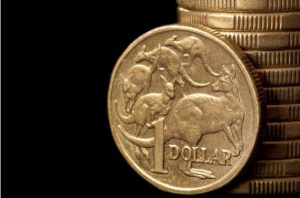Set your practice up for success with our eBook. Discover how to improve patient experience and boost revenue.
Download eBook20,000 Reasons To Invest In Your Practice Infrastructure. Ends on 30 June 2017.

The 2016 Australian Government budget has considerably expanded the number of businesses able to access the accelerated depreciation tax concession for expenditure on capital items valued at $20,000 and provides a real incentive for dental practices and businesses in the dental industry to invest in new equipment.
Key Issues For The Dental Industry —
The 2016 Budget contains a key win for small business in the form of broadening access to the accelerated depreciation for expenditure on capital items.
Prior to this budget, small businesses were eligible for an immediate tax deduction for all capital expenditure on items of plant and equipment that were installed and ready for use during the financial year up to a value of $20,000 (GST Excluded). This $20,000 limit applies to each individual item. Small businesses can apply this $20,000 rule to as many individual items as they wish.
Previously, access to this write off was limited to businesses with an aggregated turnover less than $2 million. As a result of the 2016 Australian Government budget this turnover threshold will be increased to $10 million as at 1 July 2016. This is a big win for small and medium-sized enterprises that have a turnover over between $2million and $10million that were previously unable to access the scheme.
Eligible Businesses —
To take advantage of this initiative, the business must have turnover of less than $10 million a year and it is important to note the budget is quite clear that this is “aggregated” turnover. Therefore, if the small business has two companies, both with a turnover of $6 million, then the aggregated turnover of the business group is $12 million, and the small business would not be eligible for the new accelerated depreciation.
How It Works —
The eligibility is, in-part, determined by how the asset is purchased that relies on ownership resting with the business claiming the deduction, so please note:
 |
If you lease the item you don’t own the item, and therefore will not be eligible to claim the accelerated deduction. | |
 |
If you purchase the item under a separate type of finance contract, that contract will have to confer direct ownership to the business owner, in full, at the purchase date. | |
 |
Acceptable forms of finance are chattel mortgage, loan or asset finance loan. | |
 |
A cash payment is also acceptable (of course). |
Even if you finance the purchase and have only had the item installed ready for use for one day – say 30 June – your business is still eligible for the full claim.
Eligible Items —
Any capital items costing $20,000 are covered by this provision.
There are a few items not deductible, including some horticultural plants and any software developed in-house by a business. Software purchased for business use, for example an account-keeping program, can be claimed.
Under the original temporary accelerated depreciation measures during the global financial crisis, businesses were required to purchase new items of plant and equipment. Under the current legislation second hand items of equipment are acceptable.
Stand Alone Or Aggregate —
Accelerated depreciation is based on each item of equipment not an aggregate. This allows you take advantage of this measure for multiple separate items, so long as each item cost less than $20,000. For instance, if you purchased an autoclave for $15,000 and hand pieces for $10,000, your total spend during the financial year may have totalled $25,000, which is more than the threshold. The proposed measures, however, look at each purchase separately. So in this case, as both items were less than the $20,000 threshold, both are eligible for the full accelerated depreciation claim.
Stock & Materials Purchases —
Stock and materials are specifically excluded from the proposed budget measure.
Relevant Timeframes —
The broadening of the definition for small business (to include businesses with a turnover from $2million to $10million) to access these concessions commences from 1 July 2016. These concessions finish on 30 June 2017. The definition of small business for CGT purposes remains unaltered – namely an aggregated turnover of less than $2 million still stands.
About The Author —This guidance associated with the 2016 Australian Government budget was provided by Mr Heath Stewart, a Chartered Accountant and a Director of Ecovis Clark Jacobs, Accounting and Business Advisers, specialising in providing advice to the dental industry. Advice includes practice purchase and sale advice, planning for your financial wellbeing, benchmarking, taxation, superannuation, insurance and practice management advisory.
Source: Australian Dental Industry Association
Related Posts
-
Government Plans for Gerodontics
Published: 3/3/2013The Federal Government certainly seem to be heading in the...
-
Investment Allowance
Published: 4/3/2013I have recently noticed increased interest on our chat forums...
-
DBA Statistics Show Dentist Registrations Climb
Published: 12/3/2015Issue Summary — The Dental Board of Australia (DBA) has released...


